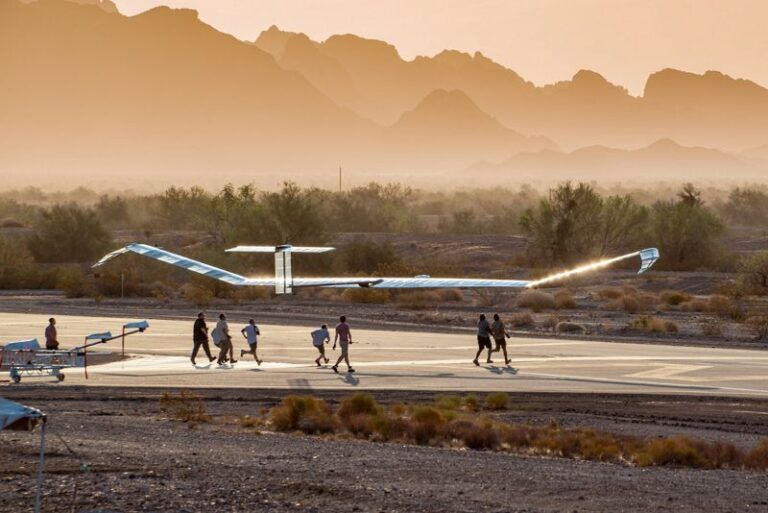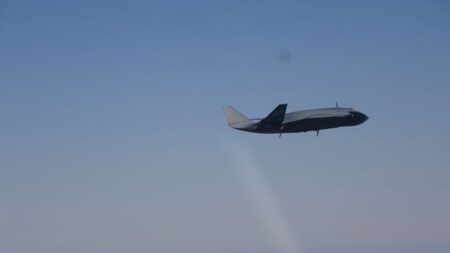Airbus’ Zephyr high altitude platform system (HAPS) has achieved a new world record in terms of altitude during an extended flight testing program this summer in the USA.
The solar-powered Zephyr-S high altitude platform system (HAPS) flew in the stratosphere for 36 days across two 2021 flights and set a new world record for absolute altitude for this type of aircraft UAS at 76,100ft. The Zephyr already holds the world record for the longest duration flight for a stratospheric aircraft of 26 days.
The Airbus flight test team secured and exercised FAA flight approvals to operate the HAPS inside the US National Airspace System (NAS) and demonstrated that Zephyr can be operated with multiple payload integrations, including a new OPAZ (Optical Advanced Earth Observation system for Zephyr) payload.
The campaign consisted of six flights in total, four low level test flights and two stratospheric flights. The stratospheric flights flew for around 18 days each, totaling more than 36 days of stratospheric flight in the campaign and adding 887 flight hours to its total time in the air.
Zephyr-S has now flown for 2,435 flight hours and demonstrated precise stratospheric manoeuvrability and station-keeping over points on the ground.
James Gavin, future capability group head at Defence Equipment & Support, the procurement arm of the UK’s Ministry of Defence said, “Working with Airbus and the Zephyr team during the 2021 flight campaign, significant progress has been made towards demonstrating HAPS as a capability. This summer’s activities represent an important step towards operationalizing the stratosphere.”
Jana Rosenmann, head of unmanned aerial systems at Airbus said,“Credible and proven ultra-persistence, stratospheric agility, and payload interoperability underscore why Zephyr is the leader in its sector. It is a sustainable, solar powered, ISR and network extending solution that can provide vital future connectivity and earth observation to where it is needed.”
The Zephyr-S has a 25m wingspan and weighs 75kg (165lbs) it has been in development at Airbus since 2013, but was originally created by UK-based defence company QinetiQ in 2003.
Airbus is aiming for Zephyr to be used initially in the defence sector to provide communications and ISR and plans to offer the stratospheric aircraft for use commercially and for disaster management. This could include monitoring the spread of wildfires or oil spills and providing communications in unconnected regions, the company has said.
Related Stories
Airbus Zephyr high altitude persistent drone concludes 2020 test flight campaign
Zephyr drone breaks endurance record during maiden test flight
Farnborough 2018: Zephyr S high-altitude persistent drone could achieve 100-day flight during tests





